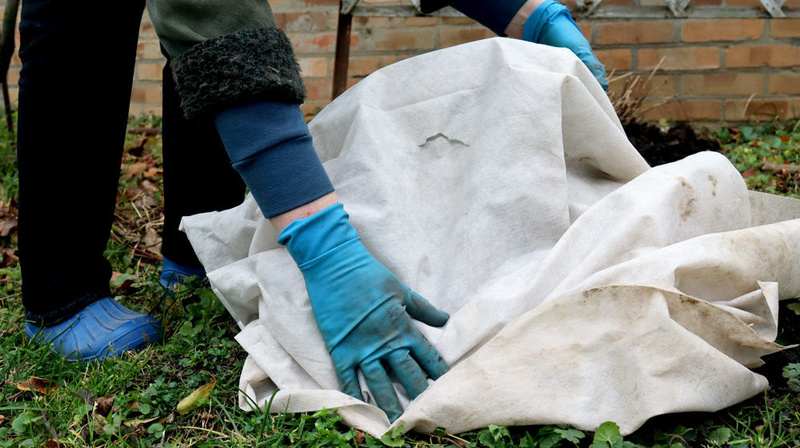
Protect Your Plants from a Freeze
Many Floridians break out their jackets once temperatures drop into the 60’s. Fortunately, our plants are hardier than most of us, but frosts and freezes in January and February present a threat that needs to be properly addressed to avoid plant damage.
Frosts or freezes in Florida are most likely to occur in January and February. Since they can easily damage or kill unprotected plants, it is important to periodically check the forecast and know when cold weather is coming. Since this is a higher-risk time of year, let’s talk about two topics: protecting plants against the cold and caring for cold-damaged plants.
Cold Protection
As with so many things in life, it’s usually more efficient to be proactive than reactive. In the organic world, it’s easier to protect plants against damage than it is to help them recover from it. And of course, when a freeze kills a plant, there’s no recovery. You have to replace it. That costs time, money, and energy that no homeowner wants to spend unnecessarily.
Preparation
It may come as a surprise but protecting against the cold begins months ahead of time. The healthier the plant, the greater its ability to survive extreme temperatures. A sick plant will be susceptible to more extensive damage than its healthy neighbor. The natural conclusion is that giving your plants the care they need throughout the year—proper fertilizing, pruning, watering, pest control, etc.—will give them a natural edge in January and February.
On that note, avoid applying fertilizer after mid-autumn to plants susceptible to frosts and freezes. Fertilizer stimulates new growth which is the most vulnerable portion of a plant when temperatures plunge.
Two final preparatory tips: wait until spring to prune since this makes plants more vulnerable in the cold, and stock up on frost blankets and plant covers before you need them.
Just Before a Freeze
Break out the covers when you’re expecting a hard freeze and ensure they’re draped all the way to the ground. If the covers aren’t touching the soil, heat will escape, and your plant will still be at risk. If you need extra warmth, add a light bulb under the cover.
You can also cover smaller plants with overturned buckets, garbage cans, trash cans, and the like.
Some plants are too big to cover entirely. In this case, wrap the trunk in newspaper or cloth until temperatures are safely above freezing.
Strong winds sometimes accompany temperature drops. Stake, tie down, or weight plant covers so they don’t blow off.
Caring for Cold-Damaged Plants
Now, not every plant will be protected every time, and that’s just how it goes sometimes. Maybe you’re out of town, you forget to put covers out, or it’s a busy week and you don’t even check the weather. Whatever the case, don’t despair.
Be Patient
First, don’t judge a book by its cover. Or, in this case, don’t judge cold damage by its appearance and don’t be too quick to prune off dead-looking plant parts. Come spring, new growth will appear below the actual damage. This will take the guesswork out of determining what’s healthy and what’s not. Simply prune above the new sprouts.
Freezing temperatures will also brown your lawn, but don’t worry. After this normal winter dormancy, green will return to the grass when it begins actively growing again.
Water and Fertilizer
Even cold-damaged plants need water, so don’t be stingy. The water in the soil can freeze and be inaccessible to plants, so fresh water can defrost the soil and provide that much-needed hydration. It may be tempting to fertilize after a freeze, but it’s best to wait until after the threat of frost has passed completely. Premature fertilization will stimulate that vulnerable new growth.